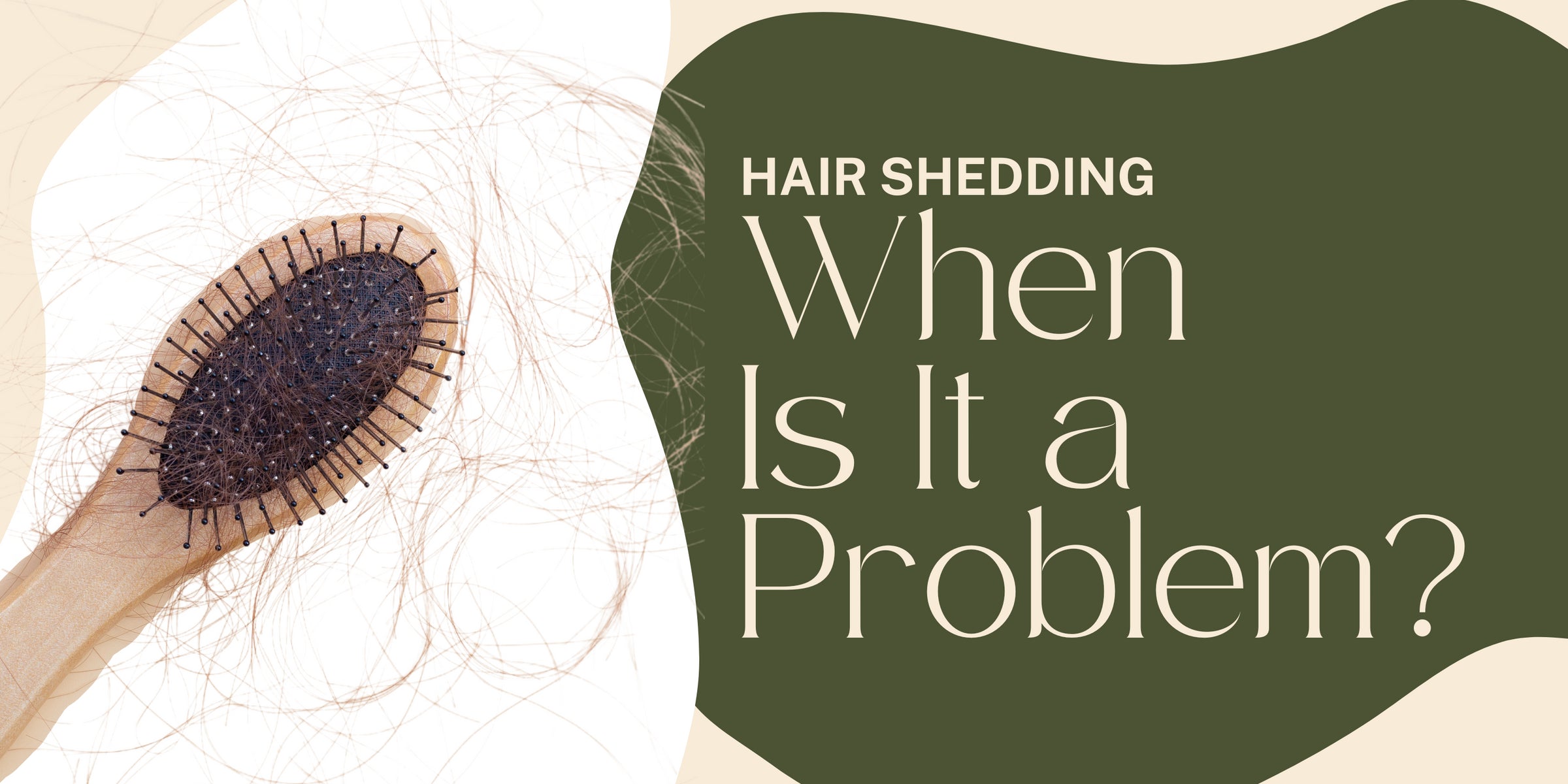How to Have a No-Shed-Vember
Are you freaked out by the hair stuck in your comb or caught in the drain after wash day? Don’t worry, hair shedding is a normal part of the hair growth cycle.
Keep reading to find out:
- How much hair shedding is normal
- How to track how much shedding is normal for you
- What to do if your hair is actually thinning
- Habits that will prevent excess shedding
Everybody Sheds
“Is hair shedding normal? Yes. Very normal,” says Vigor Roots CEO Nathalee DuRose. “In fact, it is customary to shed 50-100 strands per day.”
Shedding is a normal part of the hair growth cycle.
Here’s a quick overview of how it works.
For folks with healthy hair, about 90% of the strands on your head are in the growing or anagen stage at any given time. After roughly 3-5 years, the hair separates from the bottom of the follicle over the short catagen phase before entering the telogen stage, in which the hair stops growing and rests until it is pushed out by a new hair. Normally, 10-15% of your strands are in the resting stage at any given time.
Since the vast majority of your hair is in a growing stage, you can afford to lose the normal 50-100 strands a day without anyone noticing. There is enough hair left and enough new hair coming in for your hair to maintain its normal thickness.
How Much Hair Shedding is Normal?
So, those stray hairs in your comb and shower are most likely nothing to worry about. Especially if you have long hair- those shedded clumps are going to look more dramatic because there is a lot to each strand!
Also, if you’re not washing your hair each day, you’ll probably see bigger clumps in the drain because the strands of previous days hadn’t been loosened enough to fall out until you washed your hair. (Caution: washing your hair every day will dry out your scalp, so we don’t recommend it.)
And, FYI, women typically shed more hair per day than men. It’s estimated that 40% of women experience excessive shedding during styling.
DuRose says you should consider how your hairstyle is affecting your shedding. On the Vigor Roots Instagram, DuRose shared the vast difference between how much she shed after wearing braids for 4 weeks vs. the much smaller amount shed when she wore her hair natural.
In any case, it’s important to get a sense of what’s a normal amount of hair loss for you, since excess shedding is something to pay attention to.
Why Hair Shedding ≠ Hair Loss
There is actually a difference between hair shedding and hair loss.
As we’ve already covered, some hair shedding is normal.
Excess shedding happens with a common condition called telogen effluvium. This excess shedding often occurs abruptly, around three months after an intense physiological disruption like surgery, childbirth, medication, or grief & stress over the loss of a loved one. Luckily, the condition is temporary and your hair is likely to grow back.
Hair loss occurs when you are unable to grow new, healthy hair.
There are different types of hair loss that require different types of treatment. So, if your hairline is thinning or you’re noticing bald patches, go get checked out by a dermatologist so you know what you’re dealing with and how to address it.

Some triggers for excessive hair shedding or telogen effluvium:
- Surgery
- Childbirth
- Hormonal fluctuations
- Medications such as antidepressants and oral cotraceptives
- A stressful event like a death, divorce, car crash, or job loss
- Chronic illness
- High-fever
- Lack of nutrition
- Drastic weight loss
Here are some common causes of hair loss and the inability to grow new healthy hair:
- Hereditary hair loss
- Autoimmune disease
- Chemotherapy or radiation to the head
- Leaving a protective style in too long
- Wearing too many tight buns, ponytails, or other tension styles
- Damaging the scalp with improperly applied bleach, dye, or chemical relaxer
If you’re experiencing hair loss, don’t lose hope. Many types of hair loss are treatable- but the treatments vary depending on the cause. A dermatologist can determine why you’re losing your hair and recommend appropriate next steps.
Hair Habits To Prevent Excess Shedding & Promote Healthy Hair Growth
You know what they say: prevention is better than a cure! Making it habit to take good care of your hair will help ward off unwanted thinning.
Here’s how to maintain good hair and scalp health. For more information, check out the links for our in-depth blog posts on these topics.
- Keep a healthy scalp care routine: at least once a week, cleanse your scalp with shampoo and condition your hair; several times a week, moisturize your scalp with a nourishing, high-quality serum; if you rock a wig, take it off at night
- See your stylist for a trim & deep treatment at least every 3 months
- Style gently: give your hair breaks from tension styles, avoid harsh chemicals and heat styling, amp up your scalp care if you’re going to dye, turn the temperature down on your styling tools, and use a heat protectant
- Use gentle hair products that don’t strip your scalp of its healing, natural oils
- Eat a balanced, nutrient-rich diet: no crash dieting or drastic weight loss
- Manage your stress levels: make regular time to rest, relax, and have fun
- Read the warning labels on your medications- some common medications have hair loss as a side effect! Talk to your doctor if you have any concerns about your current prescriptions
- Sleep in a silk bonnet so your hair doesn’t snag on your bedding
Want more Scalp Care Tips? Make sure you’re following us on Instagram!

